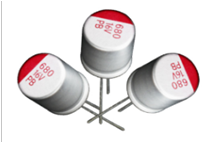A solid state capacitor is an electronic component used in computer systems and other electronic devices, mainly to solve the problem of protein coagulation in high temperature environments. In the solid state capacitors, usually engraved with a number of letters and numbers, these combinations actually represent the capacitor's many important information and performance parameters. Below, we will one by one for you to interpret the meaning of these letters and numbers:
(1) Material and brand: electrolytic capacitors generally have a brand logo and some letters, there may also be some numbers, such as ‘10’ on behalf of the capacitor length of 10mm, ‘20’ on behalf of the capacitor width of 20mm.
(2) Capacity and withstand voltage: on the capacitor, we often see some numbers, such as ‘100’, ‘220’, etc. These numbers represent the capacity of the capacitor, the unit is microfarad (μF). For example, ‘100’ represents the capacitance capacity of 100μF. Meanwhile, there will be some letters on the capacitor, such as ‘V’, ‘A’, etc., these letters represent the withstand voltage of the capacitor, the unit is Volt (V). The unit is Volt (V). For example, ‘V’ stands for 50V and ‘A’ stands for 100V.

(3) Temperature and frequency: On the capacitor, we will also see some letters and numbers, such as ‘T’, ‘F’, etc. These letters and numbers represent the temperature and frequency characteristics of the capacitor. For example, ‘T’ represents that the capacitor's operating temperature is from -20℃ to 85℃, and ‘F’ represents that the capacitor's operating frequency is 100MHz.
(4) Other parameters: On the capacitor, we will also see some other letters and numbers, such as ‘C’, ‘R’, etc. These letters and numbers represent other parameters of the capacitor. For example, ‘C’ represents the leakage current of the capacitor, the unit is microampere (μA), ‘R’ represents the insulation resistance of the capacitor, the unit is ohm (Ω).
Through the above introduction, we can understand that the letters and numbers on the solid state capacitors represent many important information and performance parameters of the capacitors. When selecting capacitors, we need to choose the appropriate capacitor type and parameters according to the actual needs and applications. At the same time, we also need to pay attention to the quality and reliability of the capacitor to ensure that the capacitor can work stably in high temperature environments and in voltage fluctuation environments, so as to ensure the normal operation of computer systems and other electronic equipment.




